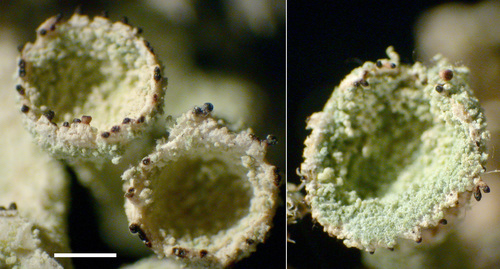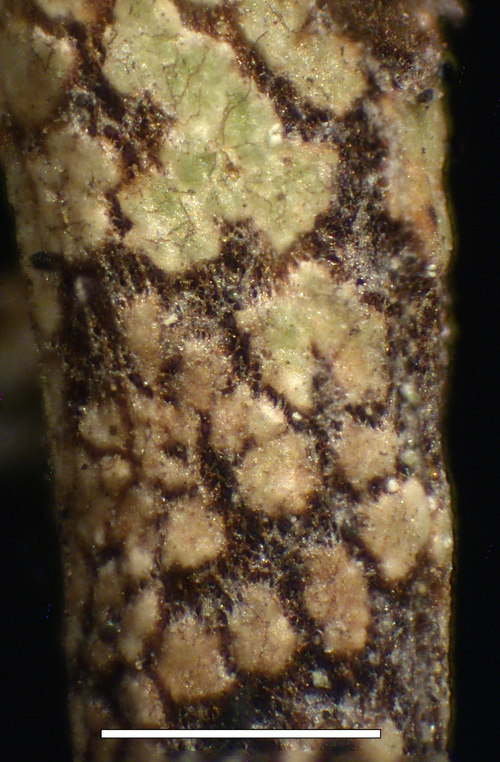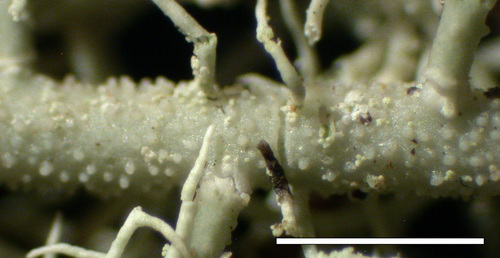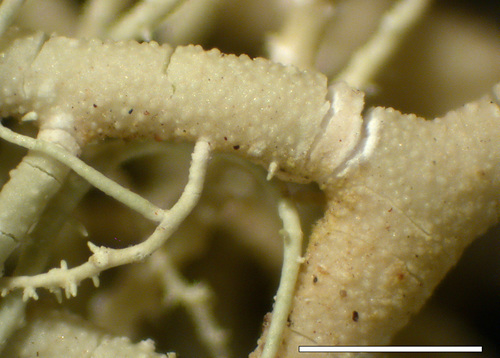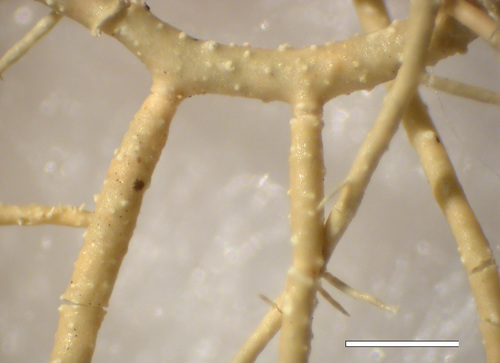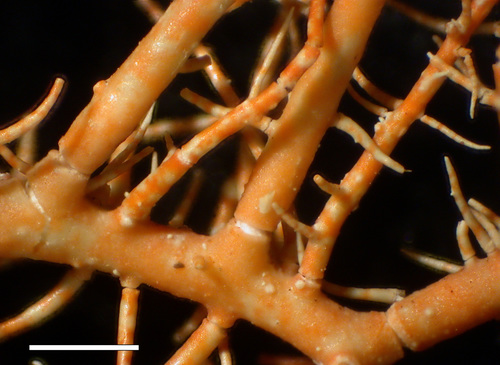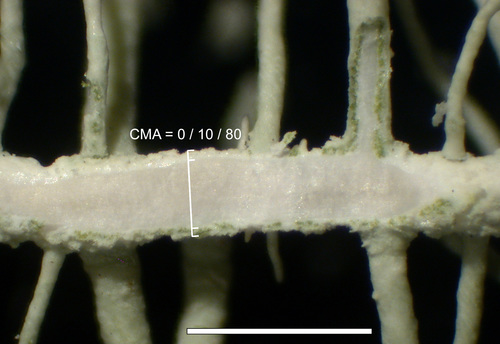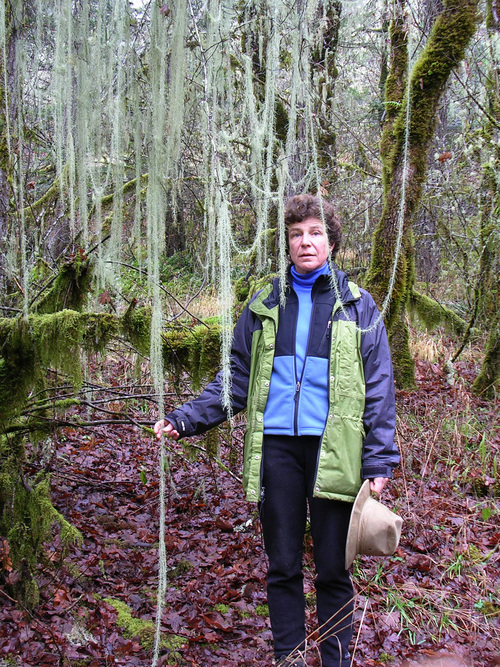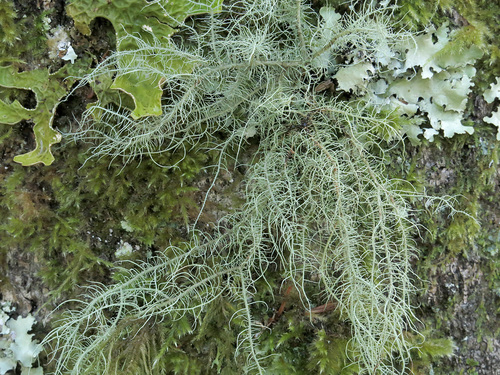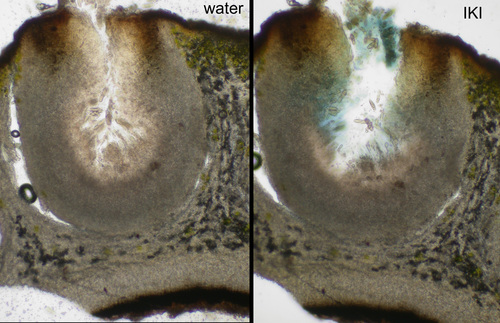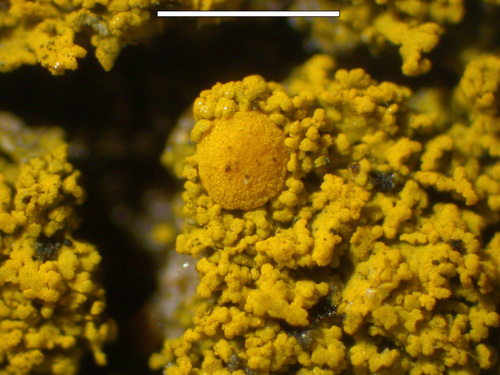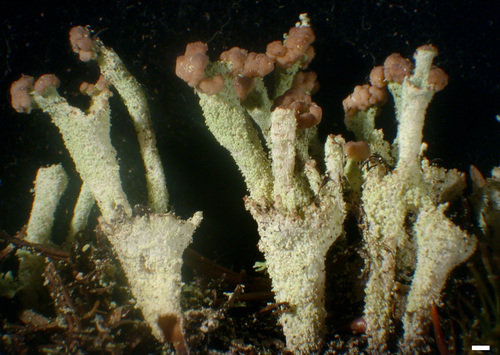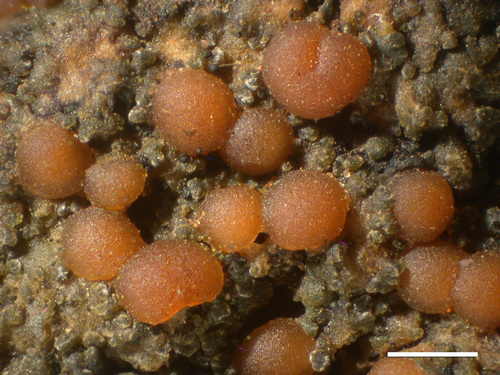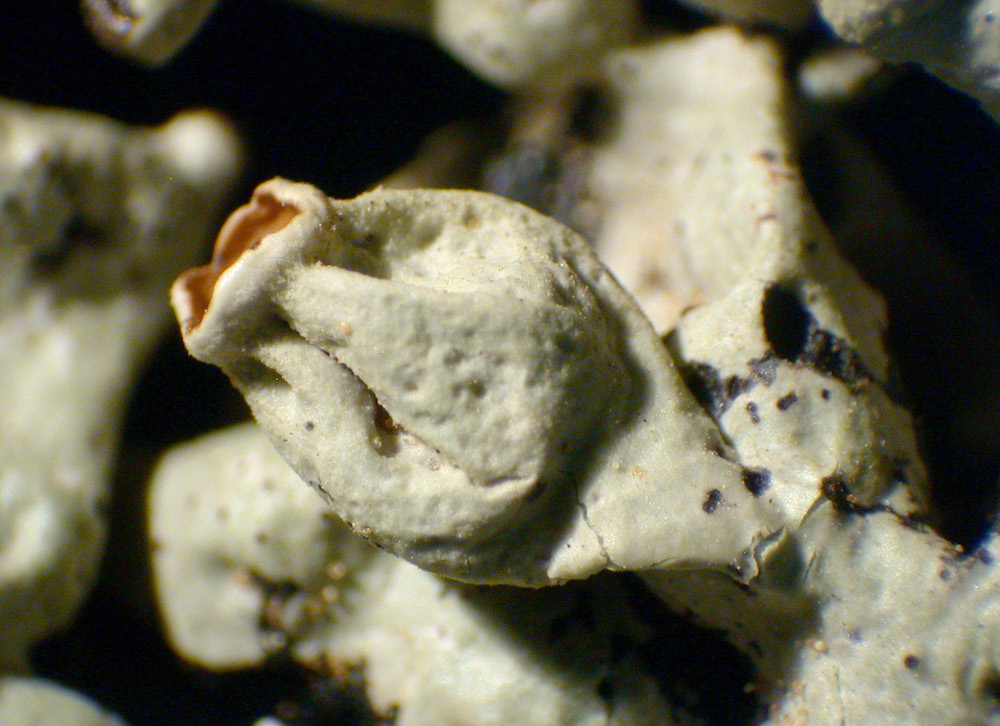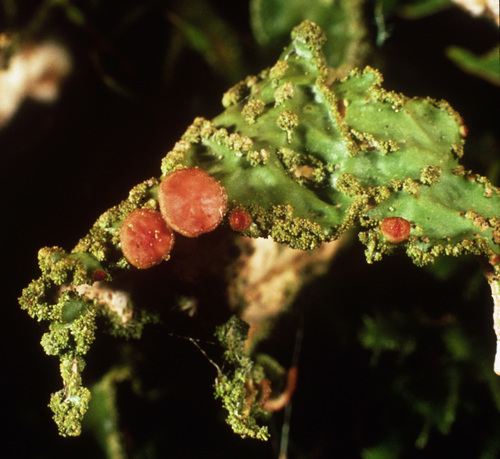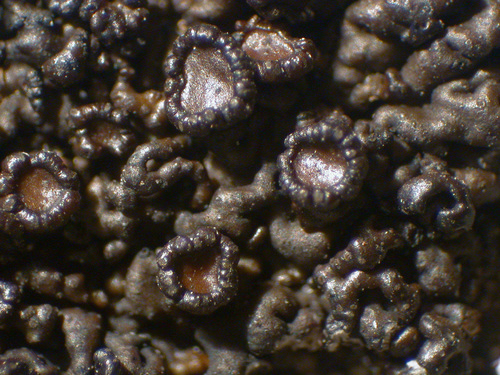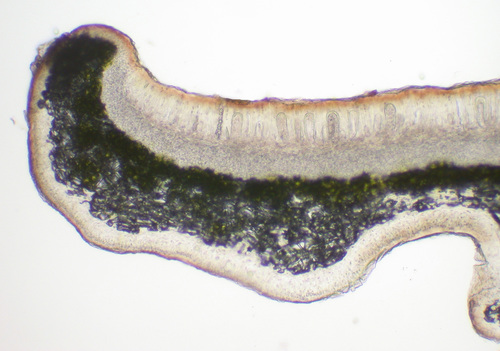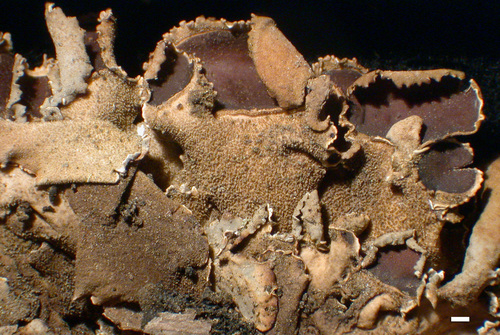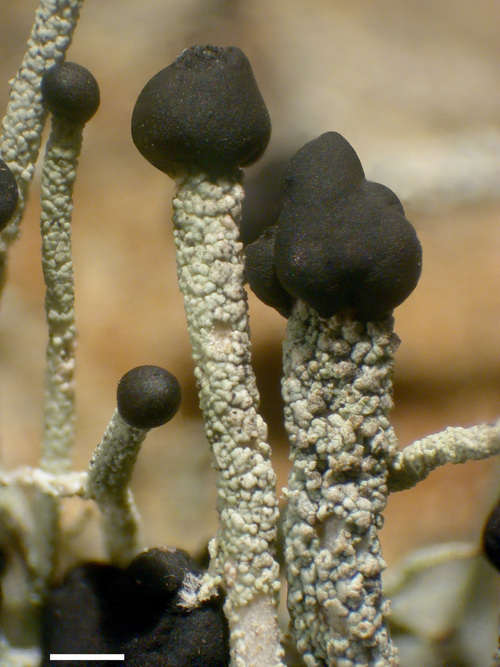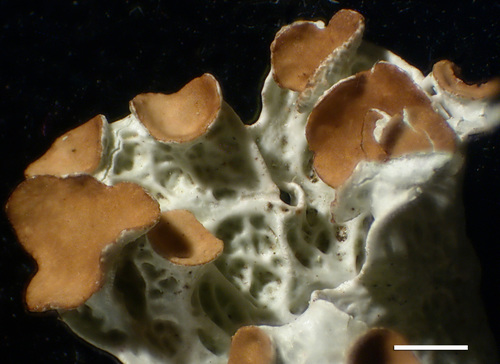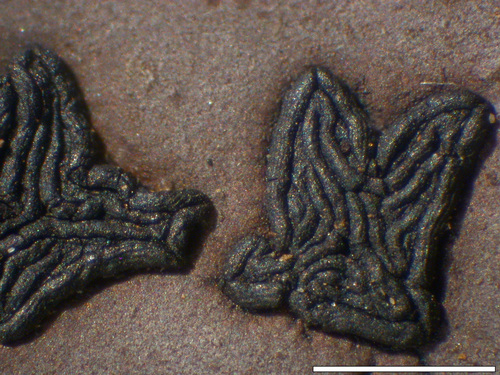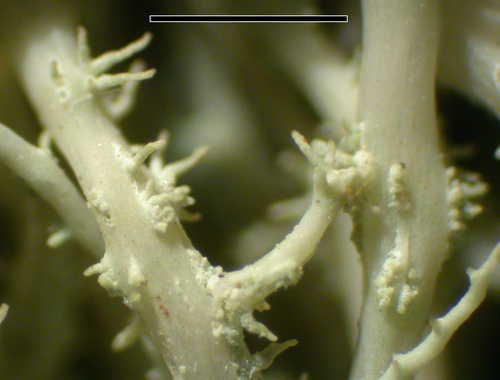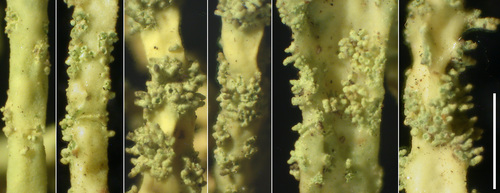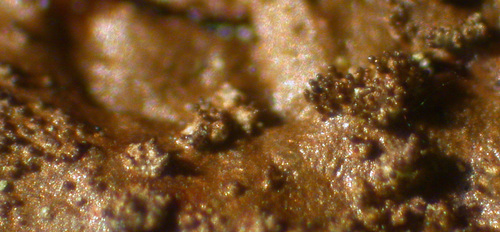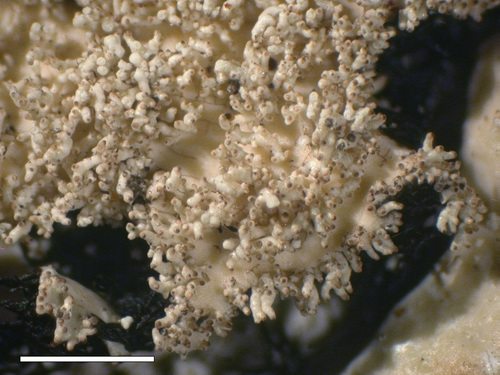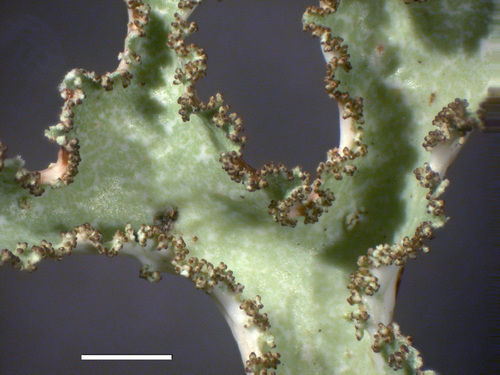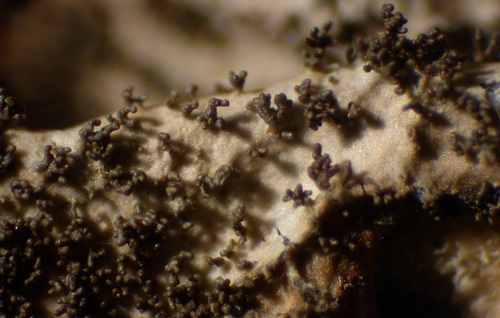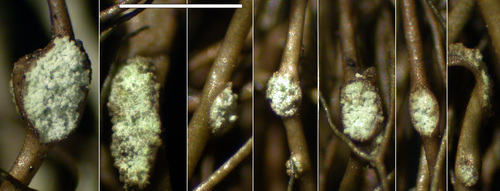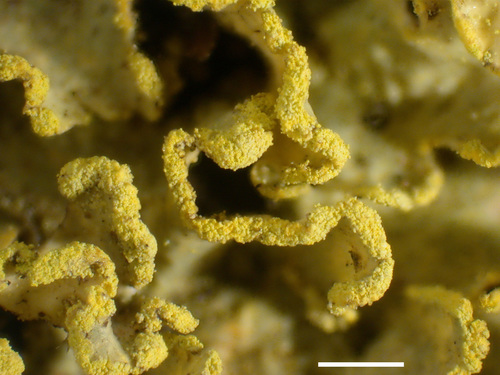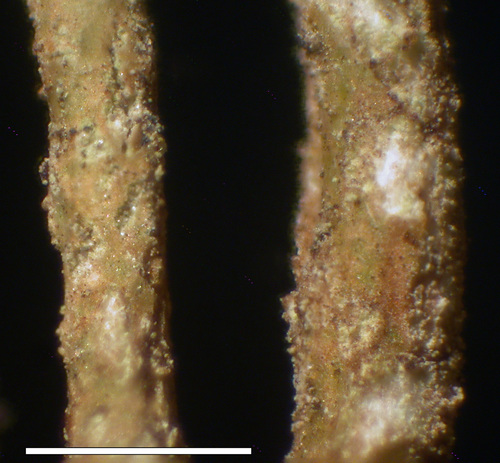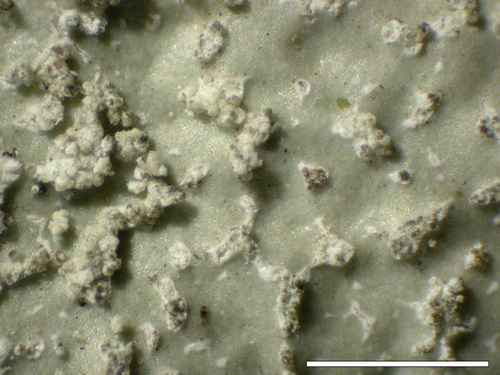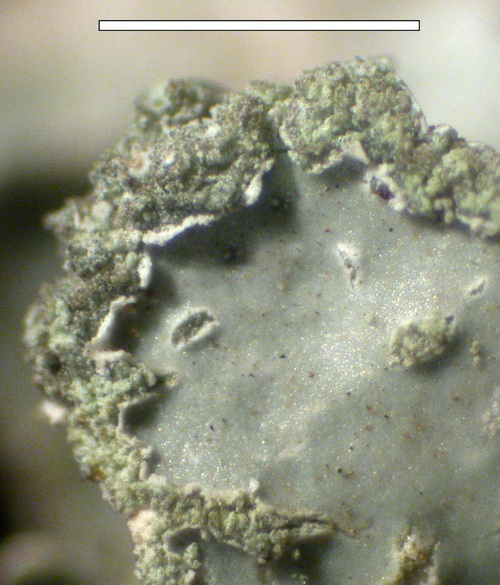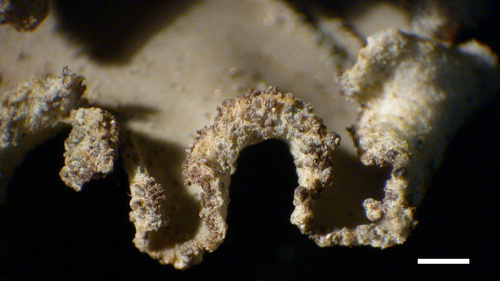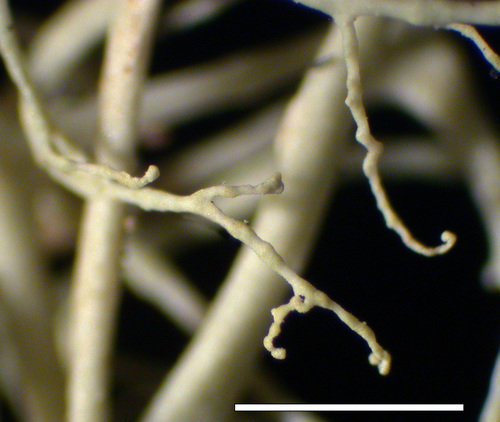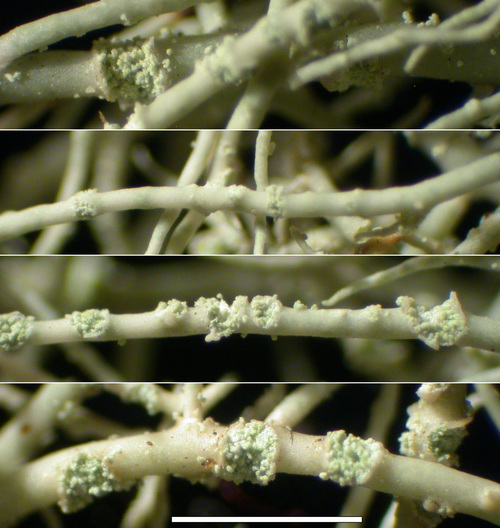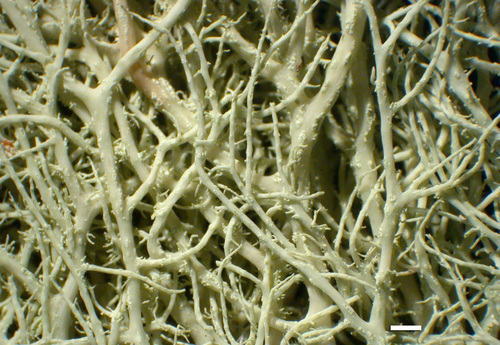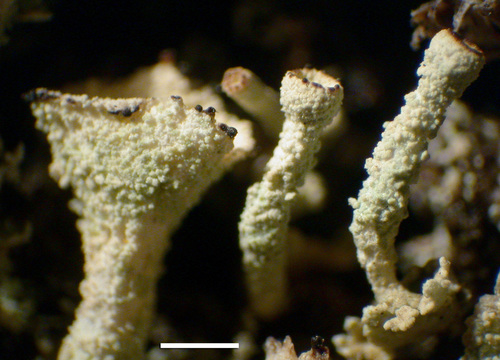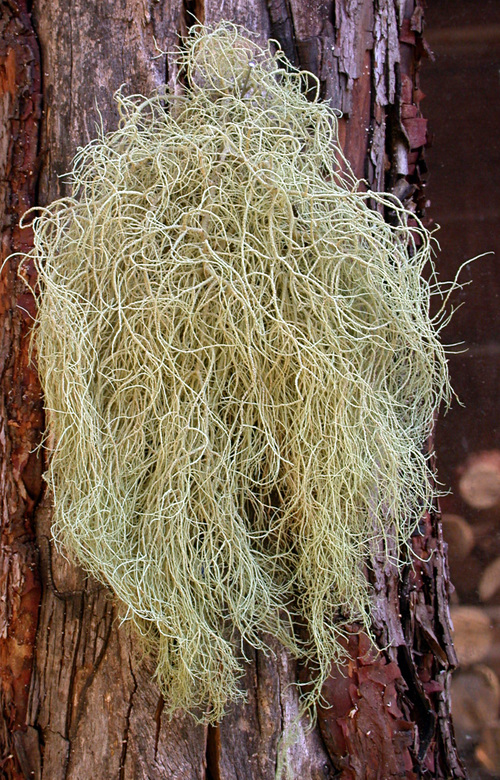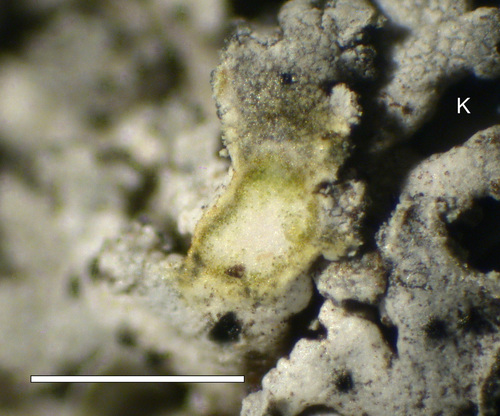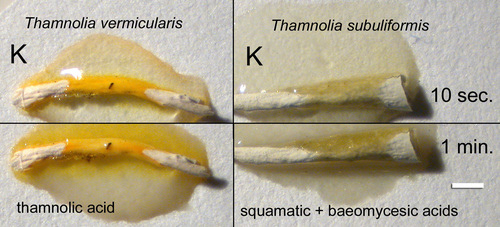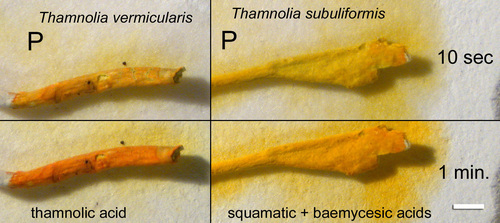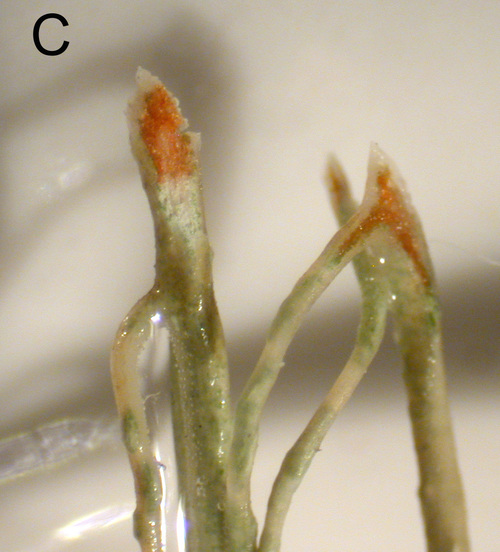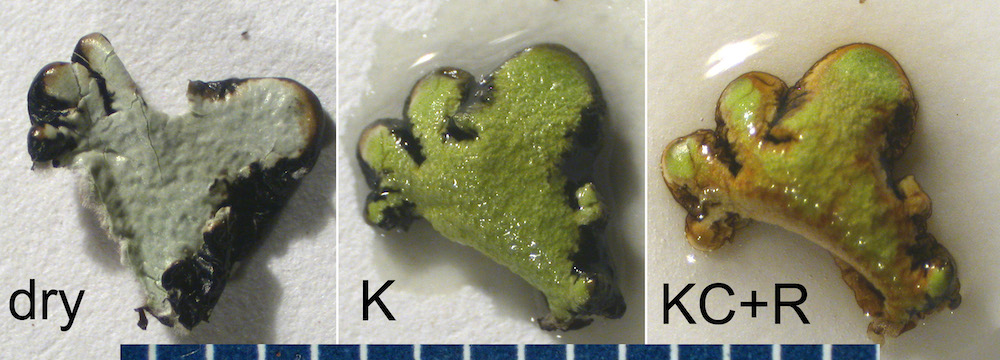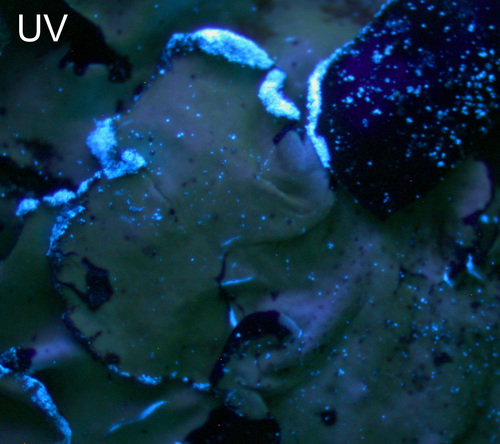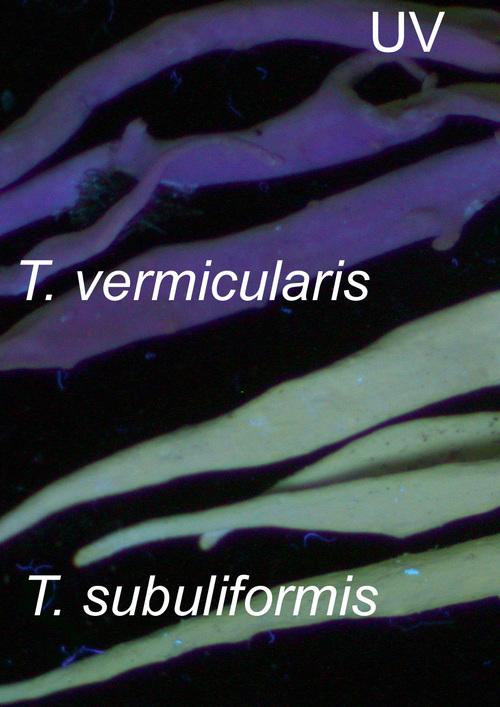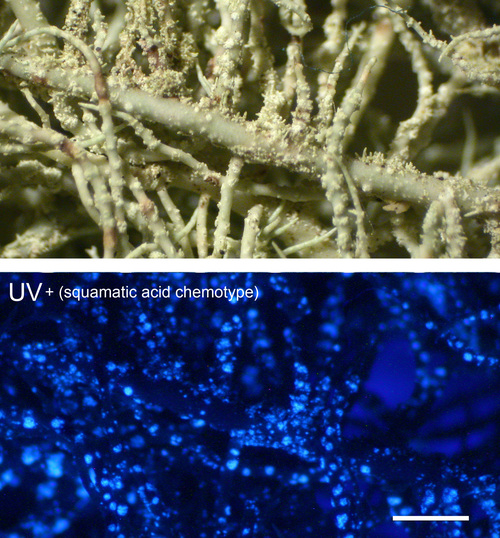Lichen species are tremendously variable, with many structures unlike plants and fungi. For accurate identification, it is critical to
understand these characteristics.
The Lichen Color Chart shows the variability in lichen colors.
Click on photos for larger version.
Scale: Bar=1mm unless noted
Overview
Habitat
Habitat refers to ecosystem where the lichen can be found.
Habitat refers to ecosystem where the lichen can be found.
Substrate
Substrate refers to the surface where the lichen can be found. Many lichens have a preferred substrate such as calcerous rock or conifer bark.
Substrate refers to the surface where the lichen can be found. Many lichens have a preferred substrate such as calcerous rock or conifer bark.
Cortex
The outer "skin" of lichens, generally smooth, often glossy, composed of closely packed fungal hyphae.
The outer "skin" of lichens, generally smooth, often glossy, composed of closely packed fungal hyphae.
Medulla
The interior layer of most lichens, composed mainly of fungal hyphae. See photos above.
The interior layer of most lichens, composed mainly of fungal hyphae. See photos above.
Growth Form
Growth forms are the general macroscopic appearance of a lichen.Fruticose
Fruticose is a 3-dimensional growth form not differentiated into upper an lower surfaces, including pendulous and stringy, upright, or bushy, or with a 2-part thallus of primary squamules and upright stalks.
Fruticose is a 3-dimensional growth form not differentiated into upper an lower surfaces, including pendulous and stringy, upright, or bushy, or with a 2-part thallus of primary squamules and upright stalks.
Foliose
Foliose is a "leaf-like" growth form with dorsiventral lobes that is usually loosely to tightly appressed, 2-dimensional or weakly 3-D, and usually with a cortex on upper and lower surfaces.
Foliose is a "leaf-like" growth form with dorsiventral lobes that is usually loosely to tightly appressed, 2-dimensional or weakly 3-D, and usually with a cortex on upper and lower surfaces.
Crustose
A crust-like growth form of lichens that is closely applied to the substrate, like paint, generally attached by all of the lower surface and lacking a lower cortex and rhizines. See many examples of crustose lichens at the Oregon Digital lichen photo library at https://oregondigital.org/sets/lichens-pnw.
A crust-like growth form of lichens that is closely applied to the substrate, like paint, generally attached by all of the lower surface and lacking a lower cortex and rhizines. See many examples of crustose lichens at the Oregon Digital lichen photo library at https://oregondigital.org/sets/lichens-pnw.
Appressed Foliose
Lobes growing pressed closely to substrate.
Lobes growing pressed closely to substrate.
Fluffy Foliose or Strappy
Growth forms that are strongly three dimensional either by flattened branches or lobes, but without regard to whether the lobes have distinguishable upper and lower surfaces. Examples include Cetraria orbata, Platismatia glauca, Ramalina farinacea, and Evernia prunastri. "Strappy" branches are elongate and flattened, as in Ramalina farinacea and Evernia pruinastri. "Fluffy foliose" includes 3-dimensional foliose forms such as Cetraria orbata and Platismatia glauca. Using the "fluffy foliose or strappy" character avoids the technical distinction between fruticose forms like Ramalina farinacea and dorsiventrally differentiated (i.e. foliose) but otherwise extremely similar growth forms, such as Evernia prunastri.
Growth forms that are strongly three dimensional either by flattened branches or lobes, but without regard to whether the lobes have distinguishable upper and lower surfaces. Examples include Cetraria orbata, Platismatia glauca, Ramalina farinacea, and Evernia prunastri. "Strappy" branches are elongate and flattened, as in Ramalina farinacea and Evernia pruinastri. "Fluffy foliose" includes 3-dimensional foliose forms such as Cetraria orbata and Platismatia glauca. Using the "fluffy foliose or strappy" character avoids the technical distinction between fruticose forms like Ramalina farinacea and dorsiventrally differentiated (i.e. foliose) but otherwise extremely similar growth forms, such as Evernia prunastri.
Dangling Hair
Hairlike, pendant from the substrate or in tufts when small.
Hairlike, pendant from the substrate or in tufts when small.
Erect Hair
Hairlike, growing erect or suberect from the substrate.
Hairlike, growing erect or suberect from the substrate.
Appressed Hair
Hairlike, growing appressed to the substrate.
Hairlike, growing appressed to the substrate.
Stalks With Squamules
Growth form of basal squamules and erect stalks.
Growth form of basal squamules and erect stalks.
Stalks
Growth form with cylindrical or roundish stalks, the tips pointed, rounded, or with cups. A podetia is the upright, hollow stalk that forms the secondary thallus in Cladonia-like lichens having a prostrate primary thallus and upright secondary thallus.
Growth form with cylindrical or roundish stalks, the tips pointed, rounded, or with cups. A podetia is the upright, hollow stalk that forms the secondary thallus in Cladonia-like lichens having a prostrate primary thallus and upright secondary thallus.
Squamules
Squamules are small flakes or scales of a lichen, often rounded, ear-like, or lobed, these units typically clustered into a colony.
Squamules are small flakes or scales of a lichen, often rounded, ear-like, or lobed, these units typically clustered into a colony.
Single Holdfast
Thallus attached by a single holdfast; can be foliose or fruticose.
Thallus attached by a single holdfast; can be foliose or fruticose.
Dangling Nets
Network of interconnected branches
Network of interconnected branches
Upper Surface
For fruticose lichens, these characteristics apply to all surfacesUpper Surface Color (Dry)
Check dry specimen away from lobe tips. Although colors are a critical characteristic in lichen identification, they are also highly variable between specimens, lighting, screens and eyeballs.The Lichen Color Chart attempts to show the variation of colors and within a color.
Tip:
For best results with the key, if the lichen is one color with some slight variation, pick the closest color. If there are distinct colors, then select multiple colors.
Pale Gray Green
Lichens with usnic acid in low concentrations may appear pale gray green.
Lichens with usnic acid in low concentrations may appear pale gray green.
Pale Yellow Green
This subtle but critical color in lichens indicates the presence of usnic acid, a secondary chemical which is very helpful in identification. In shade, it may look like green with a hint of dirty pale yellow. In sun, it may look more like a dirty pale yellow with hint of green (like chamomile tea).
This subtle but critical color in lichens indicates the presence of usnic acid, a secondary chemical which is very helpful in identification. In shade, it may look like green with a hint of dirty pale yellow. In sun, it may look more like a dirty pale yellow with hint of green (like chamomile tea).
Fluorescent Yellow Green
Upper surface (dry) fluourescent yellow greenish (example: Letharia)
Upper surface (dry) fluourescent yellow greenish (example: Letharia)
Orange
Upper surface (dry) light orange to dark orange or reddish orange
Upper surface (dry) light orange to dark orange or reddish orange
Yellow
Upper surface (dry) pale sulphur yellow, banana, or deep egg yolk yellow
Upper surface (dry) pale sulphur yellow, banana, or deep egg yolk yellow
Whitish
Upper surface (dry) whitish, including snow white and cream
Upper surface (dry) whitish, including snow white and cream
Pale Gray
Upper surface (dry) pale gray, ashy, neutral (without a greenish, olive, or brown tint)
Upper surface (dry) pale gray, ashy, neutral (without a greenish, olive, or brown tint)
Dark Gray
Upper surface (dry) dark gray, battleship gray, neutral gray
Upper surface (dry) dark gray, battleship gray, neutral gray
Black
Upper surface (dry) blackish, too dark to easily discern color
Upper surface (dry) blackish, too dark to easily discern color
Olive Black
Upper surface (dry) blackish with an olive tint
Upper surface (dry) blackish with an olive tint
Olive Brown
Upper surface (dry) brown with an olive tint
Upper surface (dry) brown with an olive tint
Olive Green
Upper surface (dry) pale to deep olive green
Upper surface (dry) pale to deep olive green
Brown
Upper surface (dry) brown, including reddish brown, grayish brown, milk chocolate, dark chocolate, chestnut, sepia
Upper surface (dry) brown, including reddish brown, grayish brown, milk chocolate, dark chocolate, chestnut, sepia
Tan
Upper surface (dry) tan
Upper surface (dry) tan
Lobe Width
Range of lobe widths in millimeters. Lognormal probability distribution used to calculate probabilities.
Range of lobe widths in millimeters. Lognormal probability distribution used to calculate probabilities.
Upper Surface Tomentose
Upper surface with minute hairs that can be matted, felty, or erect
Upper surface with minute hairs that can be matted, felty, or erect
Upper Surface Pruinose or Scabrid
Upper surface pruinose or scabrous, the latter often crystalline in appearance. Pruina are superficial chemical deposits, usually whitish and usually formed from calcium oxalates, giving a frost-covered or floury appearance. Scabrous means a surface having a roughened appearance. With a hand lens or dissecting scope the texturing material often appears crystalline or glassy (i.e. partly transparent, unlike pruina which appear white and frosty).
Upper surface pruinose or scabrous, the latter often crystalline in appearance. Pruina are superficial chemical deposits, usually whitish and usually formed from calcium oxalates, giving a frost-covered or floury appearance. Scabrous means a surface having a roughened appearance. With a hand lens or dissecting scope the texturing material often appears crystalline or glassy (i.e. partly transparent, unlike pruina which appear white and frosty).
Upper Surface with Network of Ridges
Upper surface (or all surfaces for fruticose species) with a regular to irregular network of ridges
Upper surface (or all surfaces for fruticose species) with a regular to irregular network of ridges
Upper Surface with Pseudocyphellae
Upper surface with pseudocyphellae, which may be pale, dark, white and often inconspicuous. Pseudocyphellae is a broad term referring to any differentiated breaks in the cortex of lichens but that lack specialized cells surrounding the opening: these may be round, irregular, angular, or a minuscule pore.
Upper surface with pseudocyphellae, which may be pale, dark, white and often inconspicuous. Pseudocyphellae is a broad term referring to any differentiated breaks in the cortex of lichens but that lack specialized cells surrounding the opening: these may be round, irregular, angular, or a minuscule pore.
Upper Surface with Holes
Upper surface with holes into the hollow lobe interiors.
Upper surface with holes into the hollow lobe interiors.
Cilia
Cilia are hair-like projections, usually applied to threadlike multicellular marginal hairs.Cilia present on the margins (foliose species) or projecting from branches as short, sharp, branches or spines (fruticose species).
Cilia are hair-like projections, usually applied to threadlike multicellular marginal hairs.Cilia present on the margins (foliose species) or projecting from branches as short, sharp, branches or spines (fruticose species).
Interior
Inside (Medulla) Yellow or Orange
The medulla is the interior layer of most lichens, composed mainly of fungal hyphae and generally white. If the entire medulla is pale yellow, deep yellow or orange, this characteristic is true.
The medulla is the interior layer of most lichens, composed mainly of fungal hyphae and generally white. If the entire medulla is pale yellow, deep yellow or orange, this characteristic is true.
Central Cord
Inside of fruticose thallus has a central cord. Characteristic of genus Usnea.
Inside of fruticose thallus has a central cord. Characteristic of genus Usnea.
Hollow Stalks or Hollow Lobes
Lobes or stalks hollow
Lobes or stalks hollow
Gelatinous
Thallus gelatinous (homoiomerous or unlayered cyanobacterial) vs. stratified with photobiont layer
Thallus gelatinous (homoiomerous or unlayered cyanobacterial) vs. stratified with photobiont layer
Lower Surface
These characteristics generally apply to foliose lichens or foliose lichens with squamules which have a lower surface.Lower Surface Color (Dry)
Check dry specimen away from lobe tips. Although colors are a critical characteristic in lichen identification, they are also highly variable between specimens, lighting, screens and eyeballs. The Lichen Color Chart attempts to show the variation of colors and within a color.Tip:
For best results with the key, if the lichen is one color with some slight variation, pick the closest color. If there are distinct colors, then select multiple colors.
Pale Gray Green
Lower surface (dry) pale gray greenish, including those with usnic acid in low concentrations.
Lower surface (dry) pale gray greenish, including those with usnic acid in low concentrations.
Pale Yellow Green
This subtle but critical color in lichens indicates the presence of usnic acid, a secondary chemical which is very helpful in identification.
This subtle but critical color in lichens indicates the presence of usnic acid, a secondary chemical which is very helpful in identification.
Pale Green
Lower surface (dry) pale greenish.
Lower surface (dry) pale greenish.
Dark Green
Lower surface (dry) dark green or dark greenish.
Lower surface (dry) dark green or dark greenish.
Orange
Lower surface (dry) light orange to dark orange or reddish orange.
Lower surface (dry) light orange to dark orange or reddish orange.
Yellow
Lower surface (dry) pale sulphur yellow, banana, or deep egg yolk yellow.
Lower surface (dry) pale sulphur yellow, banana, or deep egg yolk yellow.
Whitish
Lower surface (dry) whitish, including snow white and cream.
Lower surface (dry) whitish, including snow white and cream.
Pale Gray
Lower surface (dry) pale gray, ashy, neutral (without a greenish, olive, or brown tint).
Lower surface (dry) pale gray, ashy, neutral (without a greenish, olive, or brown tint).
Dark Gray
Lower surface (dry) dark gray, battleship gray, neutral gray.
Lower surface (dry) dark gray, battleship gray, neutral gray.
Black
Lower surface (dry) blackish, too dark to easily discern color.
Lower surface (dry) blackish, too dark to easily discern color.
Olive Black
Lower surface (dry) blackish with an olive tint.
Lower surface (dry) blackish with an olive tint.
Olive Brown
Lower surface (dry) brown with an olive tint.
Lower surface (dry) brown with an olive tint.
Olive Green
Lower surface (dry) pale to deep olive green.
Lower surface (dry) pale to deep olive green.
Brown
Lower surface (dry) brown, including reddish brown, grayish brown, milk chocolate, dark chocolate, chestnut, sepia.
Lower surface (dry) brown, including reddish brown, grayish brown, milk chocolate, dark chocolate, chestnut, sepia.
Tan
Lower surface (dry) tan.
Lower surface (dry) tan.
Veined Below
Veins (raised branching or netlike strands) on the lower surface of foliose lichens.
Veins (raised branching or netlike strands) on the lower surface of foliose lichens.
Rhizinate Below
Lower surface with rhizines which are multicellular root-like structures
Lower surface with rhizines which are multicellular root-like structures
Rhizines Squarrose
Squarrose branching means branching by many short perpendicular branches from a single main axis.
Squarrose branching means branching by many short perpendicular branches from a single main axis.
Tomentose Below
Faintly to distinctly felty or the surface with short, fine fuzz; having a tomentum. Lower surface tomentose, pubescent, or with minute erect hairs (as opposed to bare or with multicellular rhizines)
Faintly to distinctly felty or the surface with short, fine fuzz; having a tomentum. Lower surface tomentose, pubescent, or with minute erect hairs (as opposed to bare or with multicellular rhizines)
Cyphellae
Crater-like pores, usually in the lower surface of lichens, that open into the medulla and are lined with differentiated cells; characteristic of the genus Sticta.
Crater-like pores, usually in the lower surface of lichens, that open into the medulla and are lined with differentiated cells; characteristic of the genus Sticta.
Pseudocyphellae Below
Lower surface with pseudocyphellae. Pseudocyphellae are a broad term referring to any differentiated breaks in the cortex of lichens but that lack specialized cells surrounding the opening: these may be round, irregular, angular, or a minuscule pore.
Lower surface with pseudocyphellae. Pseudocyphellae are a broad term referring to any differentiated breaks in the cortex of lichens but that lack specialized cells surrounding the opening: these may be round, irregular, angular, or a minuscule pore.
Papillae Below
Lower surface with papillae (minute, discrete, usually rounded bumps), including any array of minute non-detaching bumps or warts
Lower surface with papillae (minute, discrete, usually rounded bumps), including any array of minute non-detaching bumps or warts
Photobiont
Characteristics related to the photobiont, the photosynthetic partner in the lichen.Green Algae Primary Photobiont
This characteristic is true if the primary photobiont (photosynthetic partner in lichen) is a green alga. Green alga are usually found in a distinct bright green layer of the lichen.
This characteristic is true if the primary photobiont (photosynthetic partner in lichen) is a green alga. Green alga are usually found in a distinct bright green layer of the lichen.
Cyanobacteria Primary Photobiont
This characteristic is true if the primary photobiont(photosynthetic partner in lichen) is a cyanobacterium. Cyanobacteria are prokaryotic photosynthetic organisms formerly known as "blue-green algae", generally having a blue-green tint and lacking chloroplasts. Cyanobacteria may be found in an an indistinct layer of the lichen or in special structures called cephalodia (ee next characteristic).
This characteristic is true if the primary photobiont(photosynthetic partner in lichen) is a cyanobacterium. Cyanobacteria are prokaryotic photosynthetic organisms formerly known as "blue-green algae", generally having a blue-green tint and lacking chloroplasts. Cyanobacteria may be found in an an indistinct layer of the lichen or in special structures called cephalodia (ee next characteristic).
Internal Cephalodia
Cyanobacteria-containing structures in lichens which otherwise contain green algae; these structures usually appear as irregular warts or inclusions, or occasionally as squamules or minutely fruticose structures. Internal cephalodia present.
Cyanobacteria-containing structures in lichens which otherwise contain green algae; these structures usually appear as irregular warts or inclusions, or occasionally as squamules or minutely fruticose structures. Internal cephalodia present.
External Cephalodia
External cephalodia present
External cephalodia present
Cladonia
Characteristics specific to genus Cladonia.Cup forming
Upright stalks (podetia) forming distinct cups
Upright stalks (podetia) forming distinct cups
Richly Branched
Upright stalks are richly branched (branched more than 5 times over the length of a mature individual)
Upright stalks are richly branched (branched more than 5 times over the length of a mature individual)
Stalks With Melanotic Base
Stalks becoming melanotic (darkened) at the base, with pale spots against a dark gray, brown, or black melanized background.
Stalks becoming melanotic (darkened) at the base, with pale spots against a dark gray, brown, or black melanized background.
Branch Axils Or Cups Open
Stalks with branch axils or cups opening into the hollow interior by either small or gaping holes
Stalks with branch axils or cups opening into the hollow interior by either small or gaping holes
Usnea
Characteristics specific to genus Usnea. All Usnea species have a central cord or axis which is elastic. Usnea individuals can be quite variable with overlapping characteristics. Consult Macrolichens of the Pacific Northwest for more defining characteristics.Papillae
Cortical papillae (minute, discrete, usually rounded bumps) present
Cortical papillae (minute, discrete, usually rounded bumps) present
Branches Cigar Shaped
Branches cigar shaped, pinched at the nodes and slightly swollen in the internodes, with the medulla of the inflated parts relatively loose
Branches cigar shaped, pinched at the nodes and slightly swollen in the internodes, with the medulla of the inflated parts relatively loose
Central Axis Pale Yellow
Central axis pale yellow
Central axis pale yellow
Cortex Reddish in Part
Cortex of healthy thalli with distinct red or orange pigments (ignore reddish dead or dying parts)
Cortex of healthy thalli with distinct red or orange pigments (ignore reddish dead or dying parts)
Central Axis Thick
Central axis thick, >2/3 thickness of branch
Central axis thick, >2/3 thickness of branch
Main Branches Nearly Unbranched
Main branches are nearly unbranched except for perpendicular fibrils
Main branches are nearly unbranched except for perpendicular fibrils
Branch Surface Wrinkled
Surface wrinkled (foveolate, pitted, ridged, very subtle or distinct). Foveolate means with delicately pits or shallow surface depressions
Surface wrinkled (foveolate, pitted, ridged, very subtle or distinct). Foveolate means with delicately pits or shallow surface depressions
Fibrils Abundant
Fibrils abundant (short perpendicular side branches) A fibril is a small fiber projecting from the thallus, roundish in cross section, usually produced at roughly right angles to the direction of growth, usually applied in Usnea.
Fibrils abundant (short perpendicular side branches) A fibril is a small fiber projecting from the thallus, roundish in cross section, usually produced at roughly right angles to the direction of growth, usually applied in Usnea.
Sexual Reproduction
Perithecia
Perithecia are a type of globose or flask-shaped ascocarp where the hymenium is completely enclosed by protective sterile tissue, except for a small opening at the tip, the ostiole. Perithecia are usually partially embedded in the thallus and appear as a small dot on the surface.
Perithecia are a type of globose or flask-shaped ascocarp where the hymenium is completely enclosed by protective sterile tissue, except for a small opening at the tip, the ostiole. Perithecia are usually partially embedded in the thallus and appear as a small dot on the surface.
Apothecia
Apothecium are a sexual reproductive structure of the fungus; usually a disk- or cup- shaped structure lined with, at maturity, an exposed spore producing surface.
Apothecium are a sexual reproductive structure of the fungus; usually a disk- or cup- shaped structure lined with, at maturity, an exposed spore producing surface.
Mazaedium
Mazedium are a type of apothecia where a modification of the hymenium of ascomycetes whereby the asci quickly disintegrate, producing a loose powdery spore mass that is added to from below and sloughed off at the top.
Mazedium are a type of apothecia where a modification of the hymenium of ascomycetes whereby the asci quickly disintegrate, producing a loose powdery spore mass that is added to from below and sloughed off at the top.
Disk Color (dry)
Although colors are a critical characteristic in lichen identification, they are also highly variable between specimens, lighting, screens and eyeballs. The Lichen Color Chart attempts to show the variation of colors and within a color. Note: if your device/monitor is not color calibrated, of course the colors will be skewed.Tip:
Note that parasitic fungi can sometimes obscure the actual disk color.
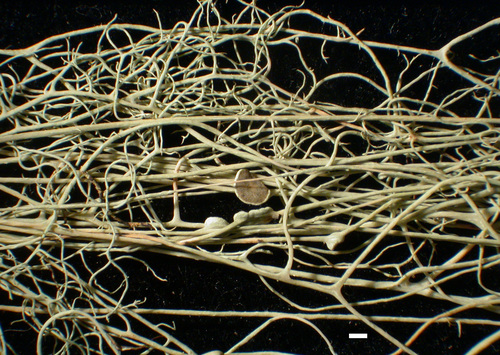
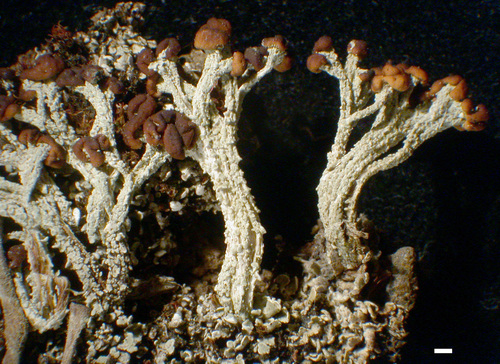
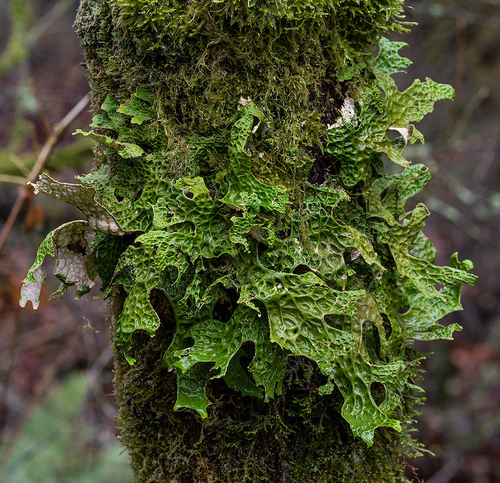
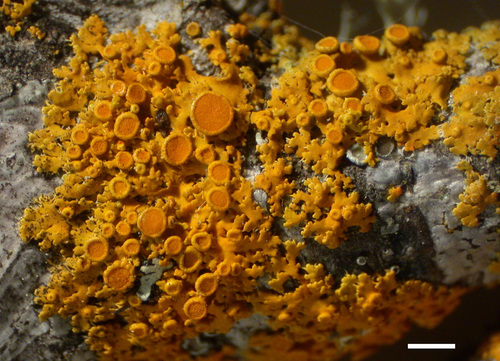
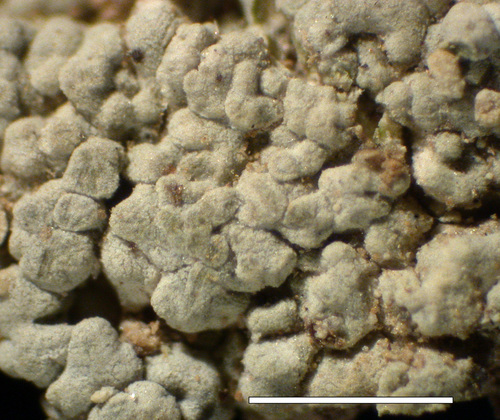




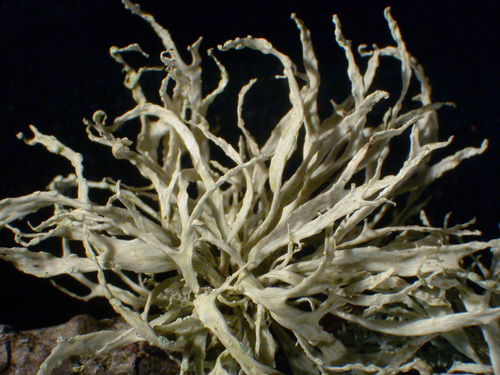
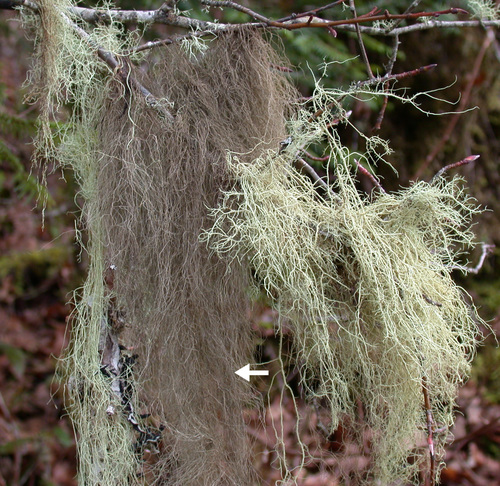
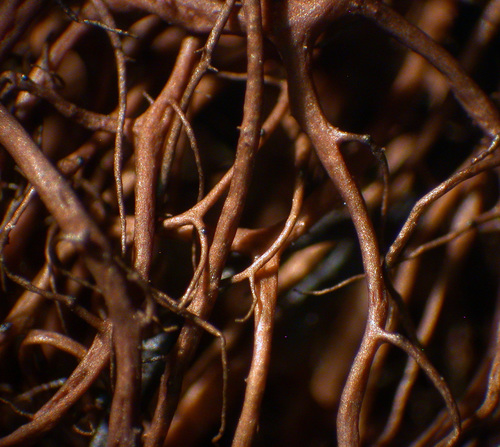
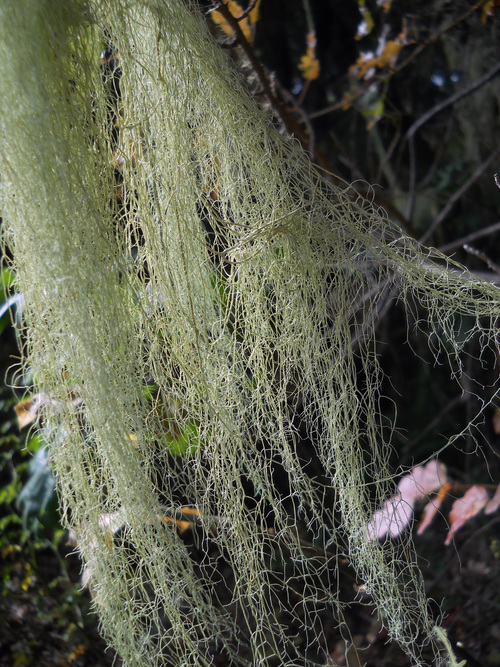
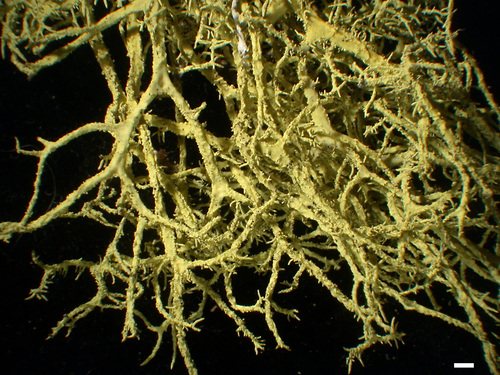

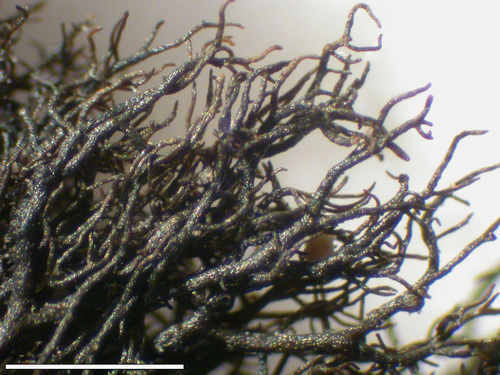

.JPG)

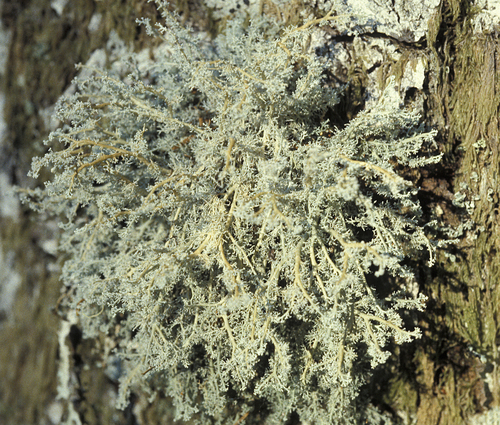
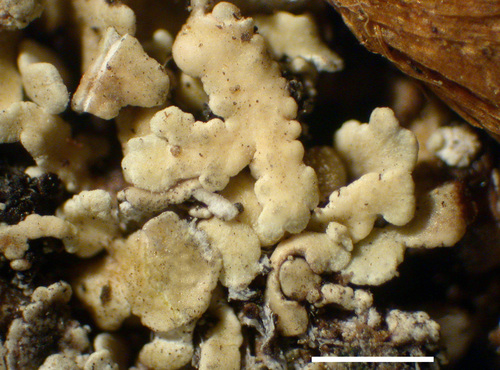
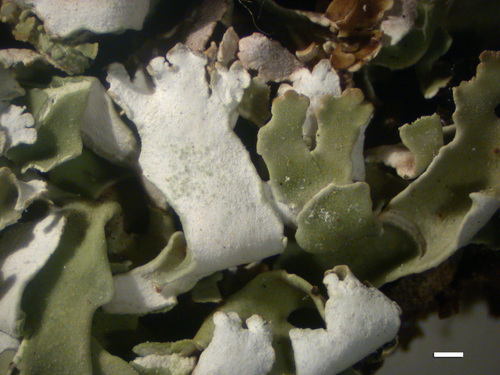


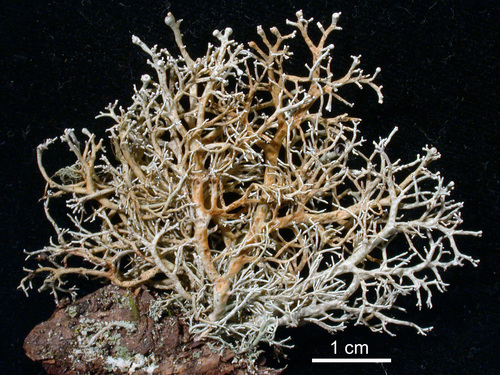

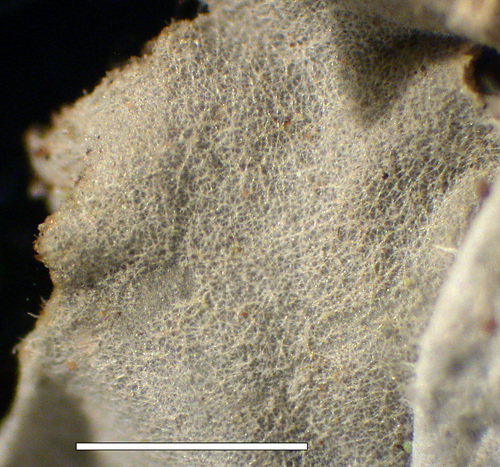
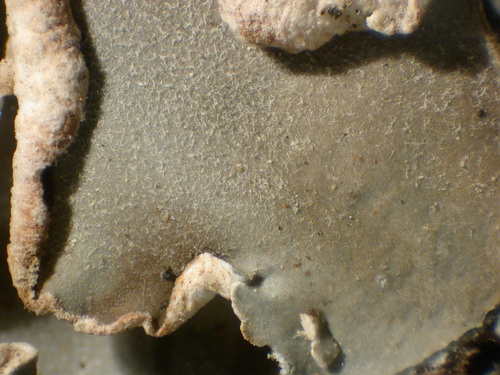
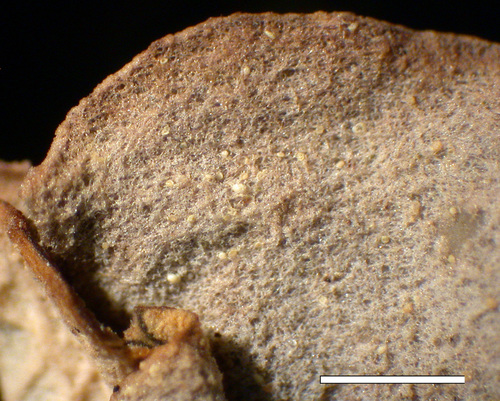
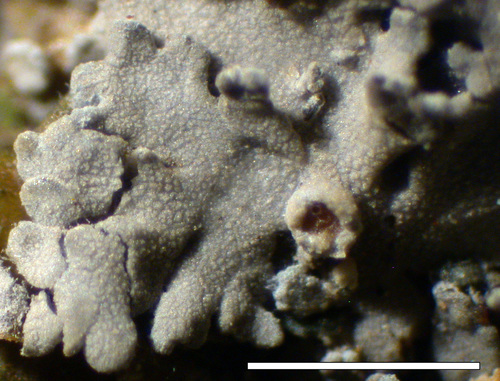
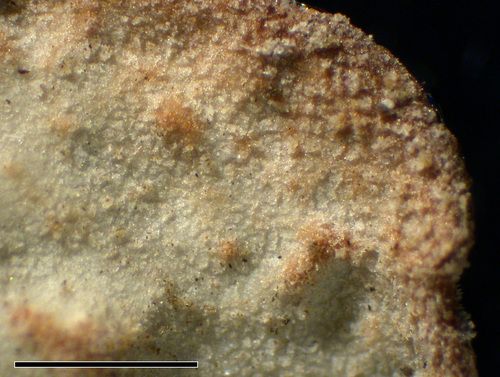
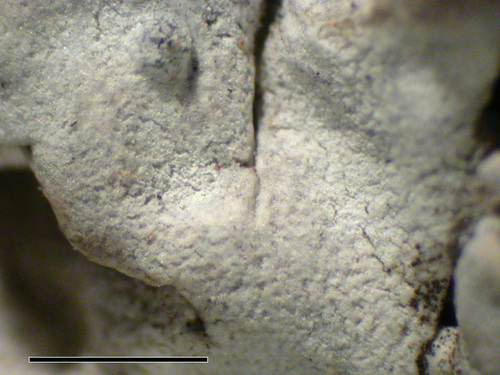
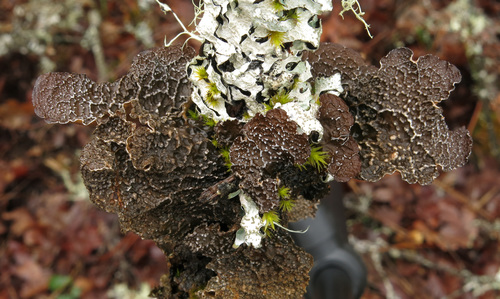
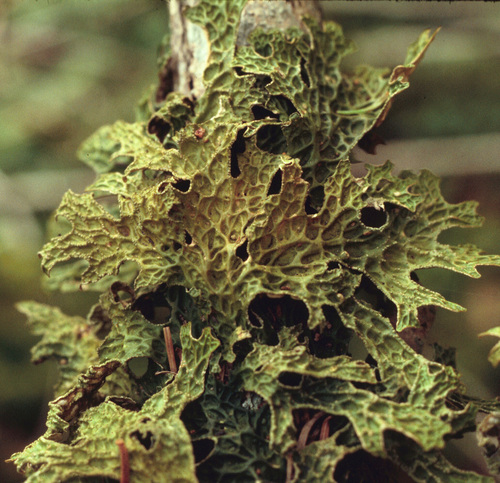


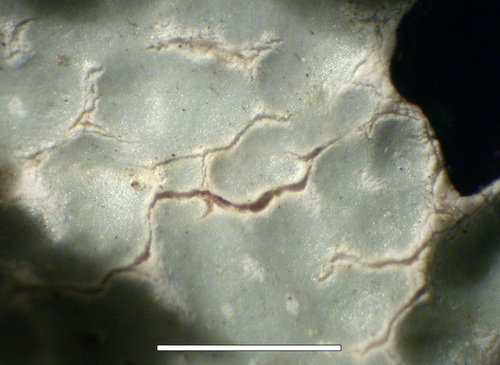
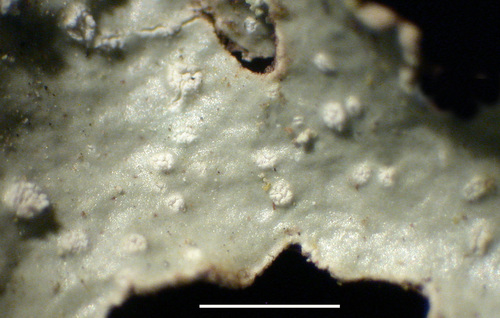
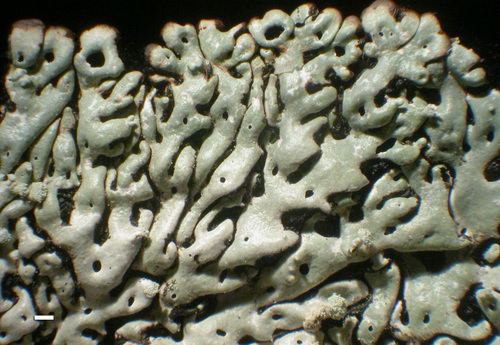
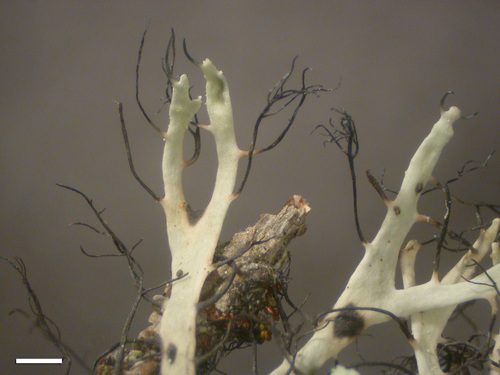
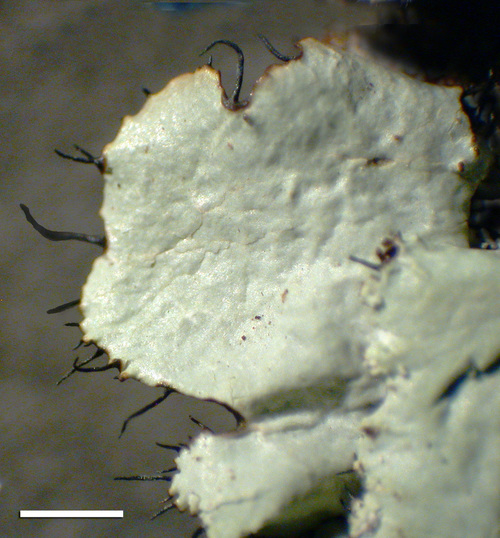
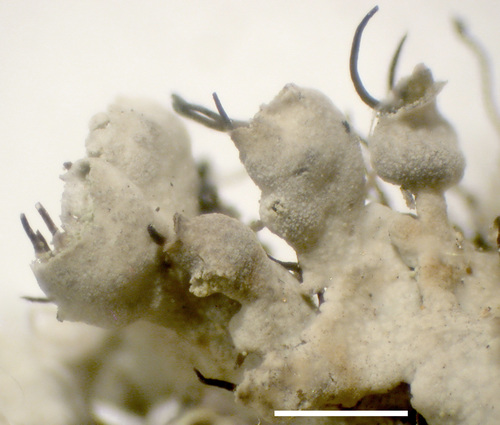


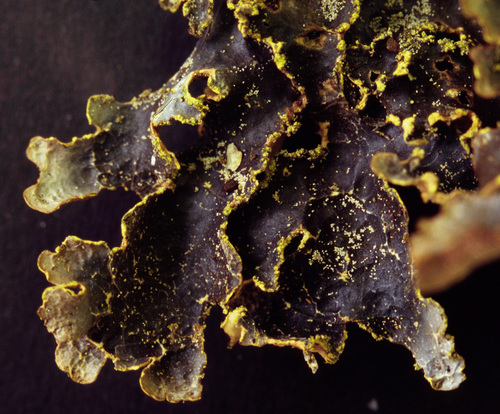
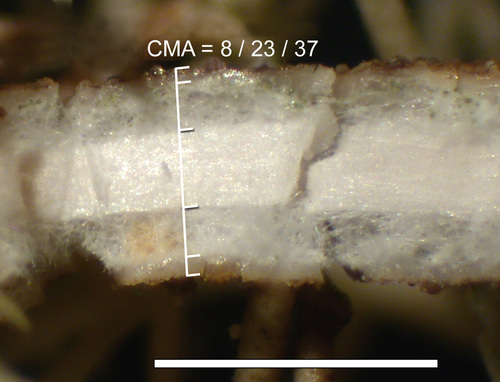
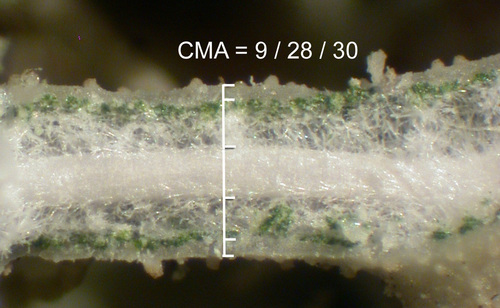
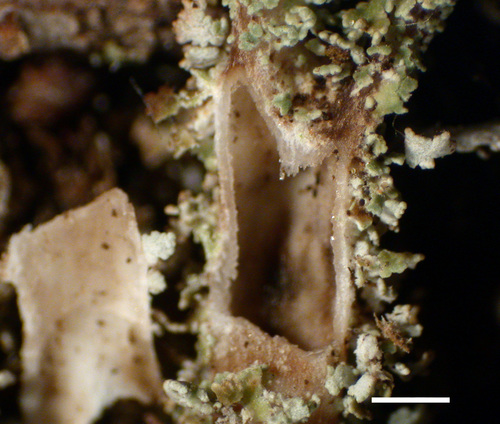
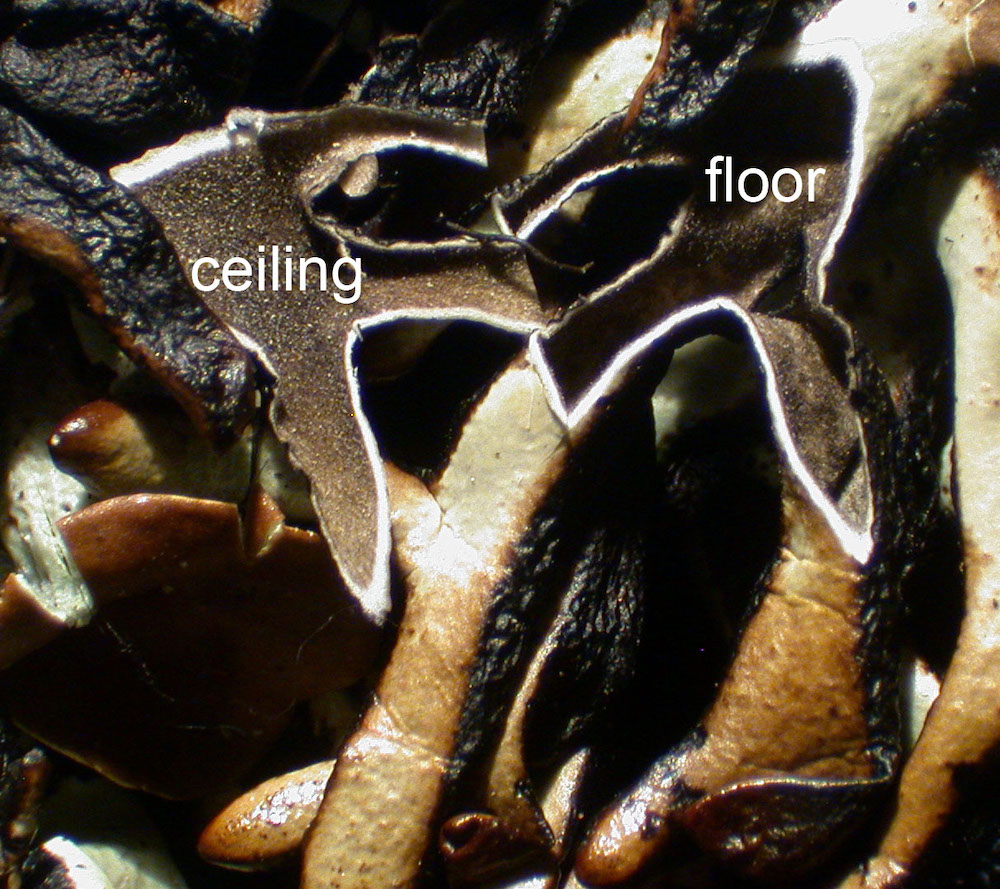
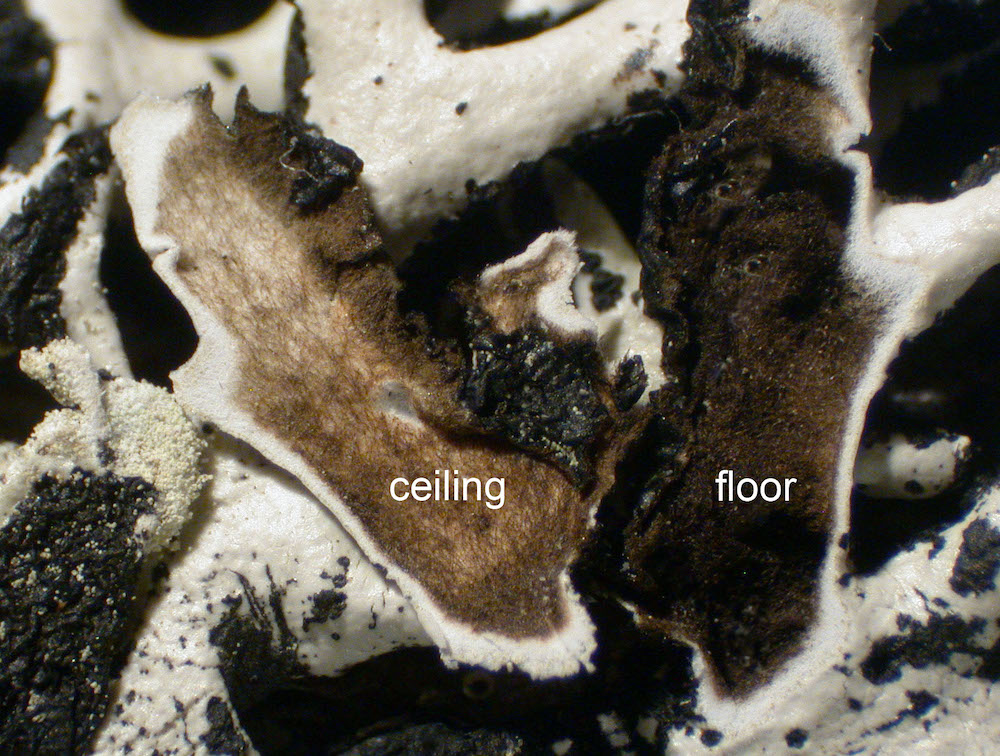

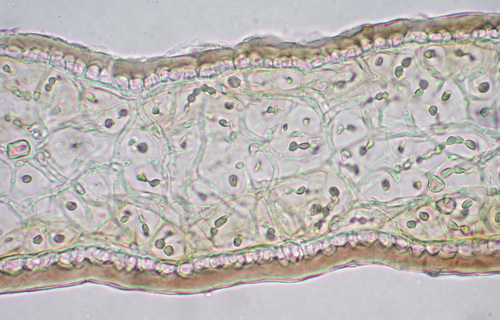

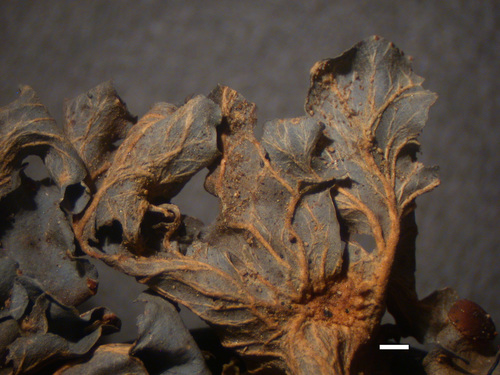
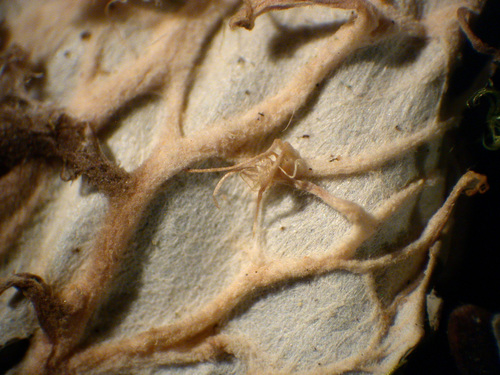

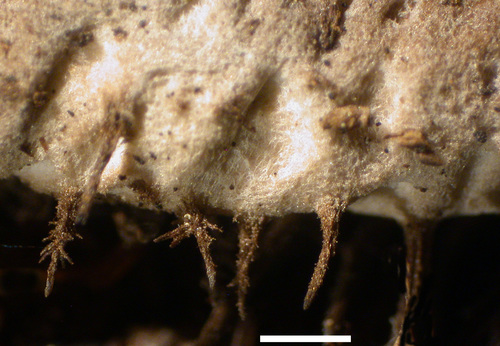
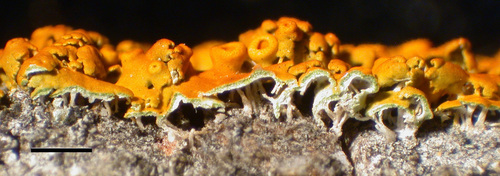
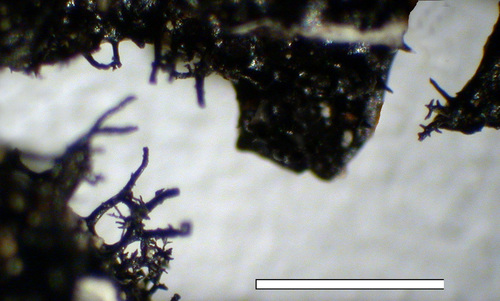


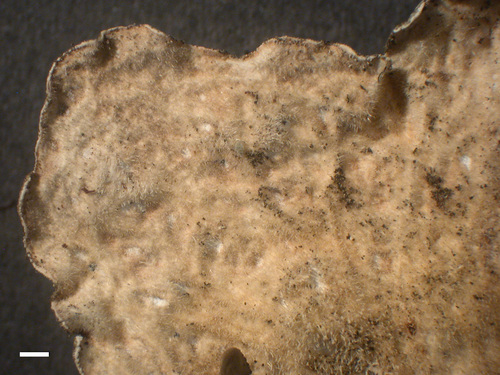
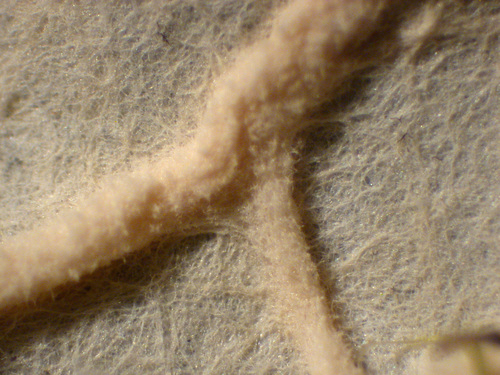

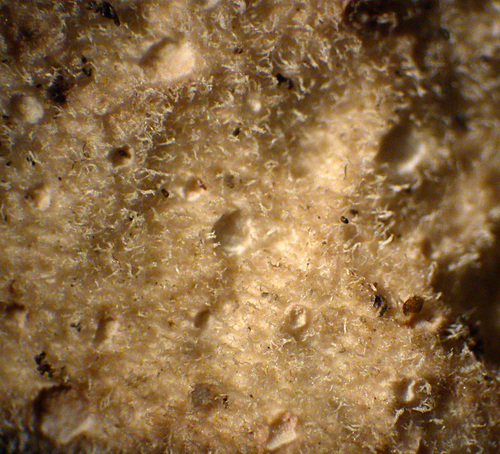
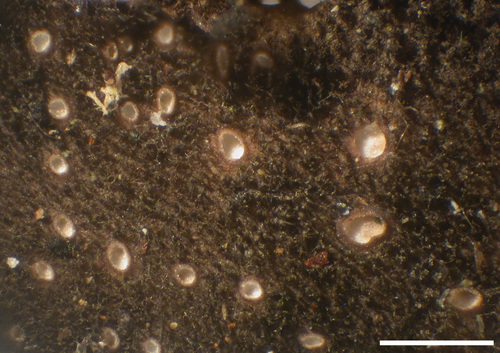


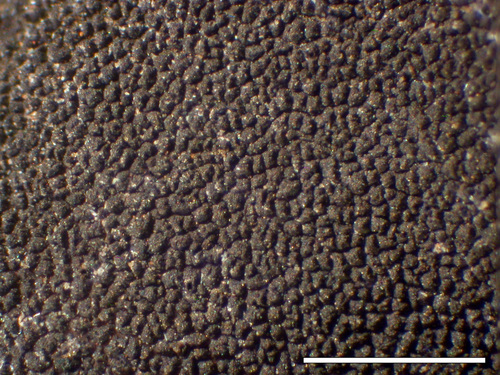

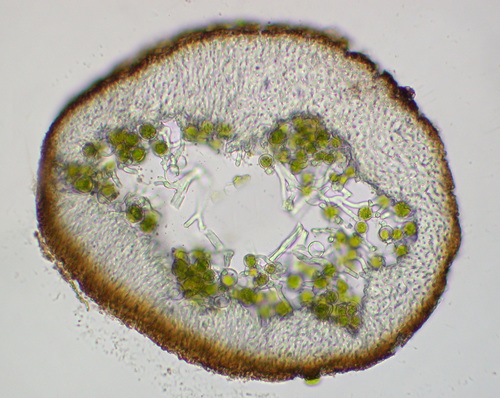

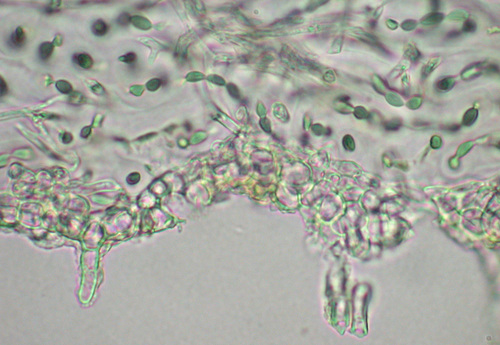
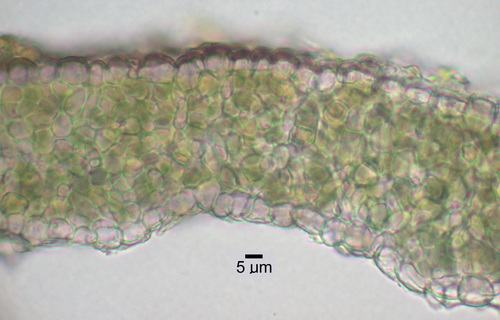
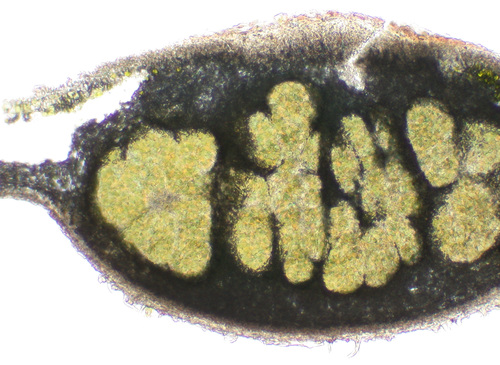
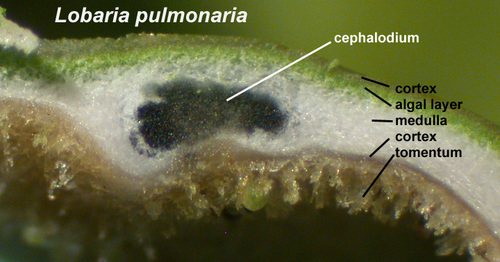

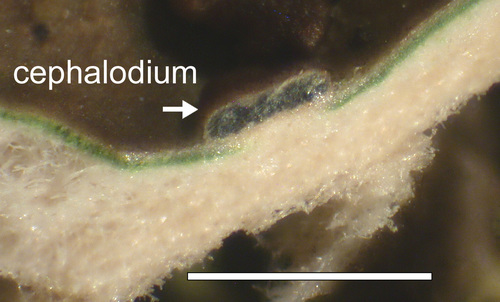
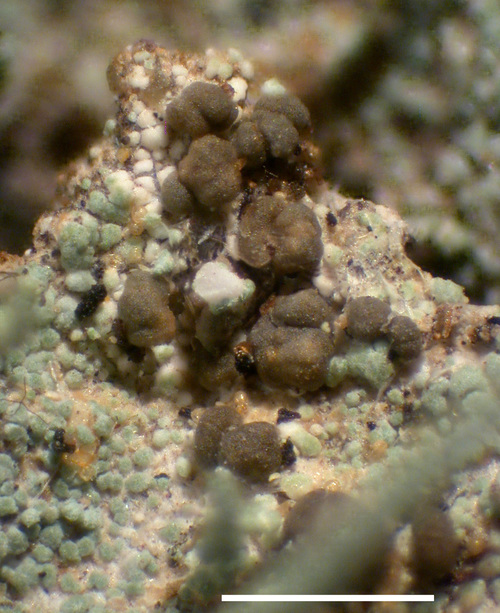
.JPG)
